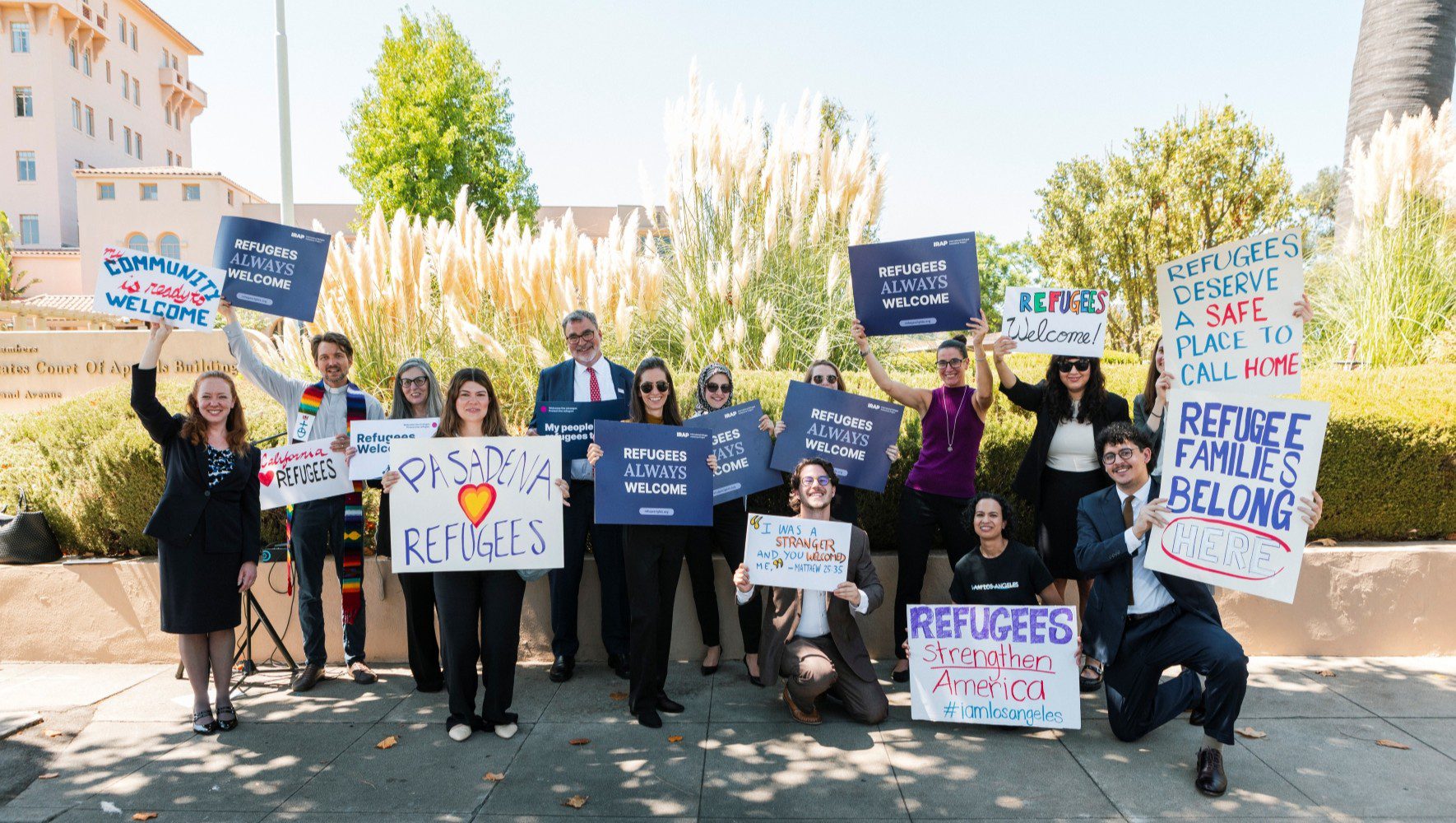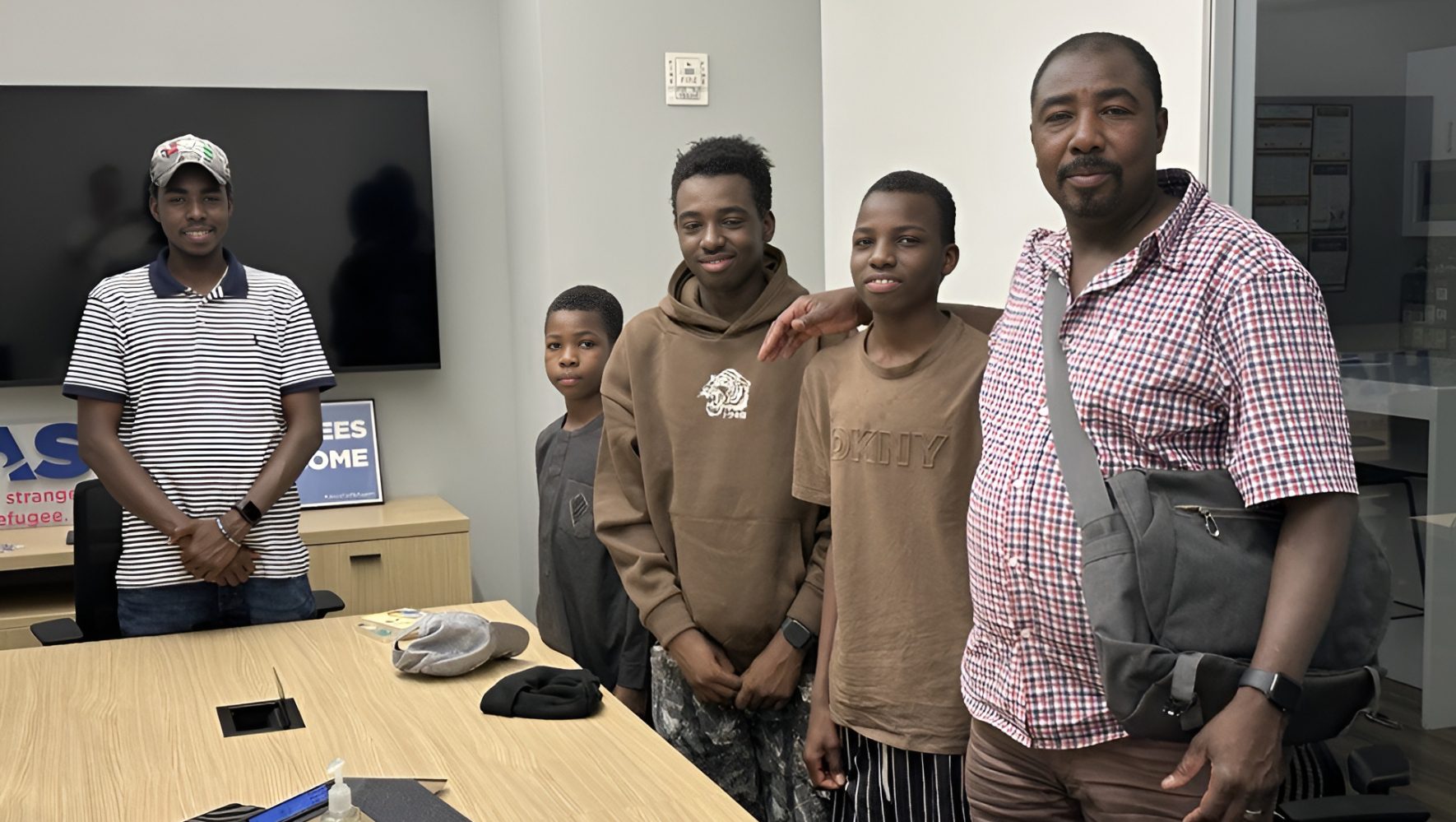Stories from the Border: U.S. Policy Drives Unsafe Migration
By Ayelet Parness, HIAS.org
Feb 02, 2022
Asylum policies established by the Trump administration and continued under the Biden administration have exacerbated the situation at the U.S.-Mexico border, according to HIAS experts on the "Stories from the Border" webinar on January 27.
Due to “the lack of safe, regular, and humane” options for seeking entry to the United States, migrants must resort to using dangerous routes and methods, reported HIAS Field Coordinator Gabriela Munoz Cano, who works out of Ciudad Juarez, Mexico. The risks are fatally clear. In December, 55 migrants were killed and dozens more were injured when a truck carrying them crashed in Southern Mexico, while in mid-January, a 7-year-old Venezuelan girl drowned crossing the Rio Grande with her mother.
“The reason people have to cross the river… is because they have no other way, because of Title 42,” said Sue Kenney-Pfalzer, referring to a Trump-era implementation of an obscure public health rule which allows for the immediate expulsion of asylum-seekers. Kenney-Pfalzer, HIAS director of Border & Asylum Network, added, “there is literally no way for anyone to approach a port of entry, be it at a bridge or whatever, and say, ‘I fear persecution in my home country. I want to seek asylum in the U.S.’ That has not been possible for almost two years now.”
Title 42, together with the Migrant Protection Protocols (MPP), commonly known as the “Remain in Mexico” program, have essentially closed options for asylum seekers at the U.S.-Mexico border. Title 42 allows the U.S. government to summarily expel non-citizens without giving them the opportunity to seek asylum, under the guise of containing the spread of COVID-19. “Remain in Mexico” lets the government send asylum seekers from anywhere in Central and South America back to Mexico to wait for their cases to reach immigration court. Asylum seekers – often marked out by dress and custom from locals – find themselves in areas of Northern Mexico with a tier 4 travel advisory, the same level of danger used for Afghanistan, Syria, and Iraq.
This danger is evident in the Mexican border city of Reynosa, according to Lindsay Schenk, a HIAS border fellow working with local partner ProBAR in the Rio Grande Valley. Over 2,000 migrants live there, in a tent encampment near the international bridge. With winter temperatures reaching the low 30s, many migrants have been getting sick. Moreover, the threat of violence is ever-present; after being returned to Reynosa at night by Border Patrol, a woman who eventually became Schenk’s client was abducted and taken back across the U.S. border, where her captors raped and abused her. When she was able to escape, she wandered in the desert for days before being found by Border Patrol, who sent her right back to Reynosa as soon as she was discharged from the hospital.
“People are snatched from this plaza in the middle of the day and are never seen again,” said Schenk. “And at night it's worse.”
Policies at the border are inconsistent, varying from one port of entry to another. Nico Palazzo, a HIAS border fellow working with Las Americas Immigrant Advocacy Center in El Paso, said that he and his colleagues in the area have been somewhat successful in gaining Title 42 exemptions for clients who belong to certain vulnerable populations, including those with medical or mental health issues and those who are at increased risk of violence in Mexico. Twice a week, his team escorts people from Ciudad Juarez across the border into U.S. Customs and Border Protection (CBP) custody, where their fight to remain in the U.S. can truly begin.
The variations in how border policies are enforced incentivize people not only to enter the U.S. through the wilderness between ports of entry, but to travel dangerous routes, dominated by violent, extortionate cartels, in order to reach ports of entry where they believe they will have a better chance of entering into the asylum process. In many cases, Mexican federal officials and state police also harass and extort those looking to cross into the U.S.
In one example recounted by Palazzo, two young Venezuelan mothers and their children were placed into the “Remain in Mexico” program and released into Juarez in the middle of the night. The women were almost immediately sexually assaulted, but were able to escape and board a bus that would take them to Tijuana. Less than 24 hours later, their bus was stopped and boarded by the police, who then stole their money, legal documents, and passports.
“Unfortunately, that's just one of thousands of stories,” said Palazzo.
There is some hope for those asylum seekers who are able to obtain legal counsel from organizations located along the U.S.-Mexico border. After being referred to Schenk by a lawyer from Angry Tias and Abuelas who met her in a shelter in Reynosa, Schenk’s client was connected with a volunteer psychologist who diagnosed her with acute stress disorder and PTSD. On those and other grounds, Schenk submitted a request for humanitarian parole for this client, who was approved and through a network of NGOs was able to reach her final destination in the U.S.
These successes, however, are a drop in the bucket of the current crisis at the border where, according to Palazzo, only 4% of asylum seekers are able to access legal counsel. In particular, he pointed to the over 20,000 individuals who, under the first iteration of “Remain in Mexico”, were expelled to Mexico in absentia – meaning they received automatic orders of removal because they did not appear in court, regardless of any extenuating circumstances. These individuals are stuck in a state of legal limbo, without any recourse to apply for asylum in the U.S.
“I spent two years of the Trump administration giving this very pessimistic view of our immigration policy,” said Palazzo. “And there was a silver lining in it, which was essentially: a change of administration means a change of policy. A change of administration means some hope in the lives of these individuals… we're in a situation right now where, quite frankly, very little has changed.”
To take action to help asylum-seekers at the U.S.-Mexico border, click here.


